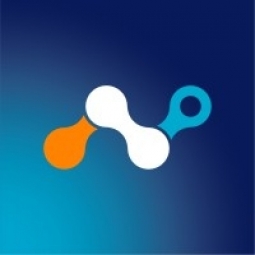公司规模
Large Corporate
地区
- America
国家
- United States
产品
- Netskope for Google G Suite
- Netskope for Web
- Netskope for IaaS
技术栈
- Google G Suite
- Google Drive
- Gmail
实施规模
- Enterprise-wide Deployment
影响指标
- Cost Savings
- Productivity Improvements
- Digital Expertise
技术
- 平台即服务 (PaaS) - 连接平台
- 平台即服务 (PaaS) - 数据管理平台
适用行业
- 电子产品
适用功能
- 离散制造
- 质量保证
服务
- 云规划/设计/实施服务
- 网络安全服务
- 数据科学服务
关于客户
AVX Corporation 是一家领先的国际制造商和供应商,提供先进电子元件和互连、传感器、控制和天线解决方案。该公司在全球 16 个国家/地区拥有 29 家制造工厂。AVX 总部位于南卡罗来纳州 Fountain Inn。创新、研究和开发对于 AVX 向客户提供更安全、更有效、更可靠的电子元件至关重要。AVX 专注于持续创新,利用云不断超越客户期望。AVX 是 Google Apps 用户,员工采用 Google G Suite 以及 Google Drive 和 Gmail 等服务来更好地协作,创造了一个促进创新并实现使命的环境。
挑战
AVX Corporation 是一家领先的国际先进电子元件制造商和供应商,它面临着多项挑战。该公司需要能够查看和控制 Google G Suite 中的数据。他们还需要发现环境中的 ShadowIT 云服务、证明符合 GDPR 规定,并检查和控制云流量(即使它来自移动设备)。随着公司内部 G Suite 的使用量不断增长,上传的数据量也不断增加,而 IT 部门对云中的数据几乎无法查看或控制。这些数据包括客户合同、员工和客户信息、知识产权和其他机密记录。信息安全专家 Zack Moody 意识到他们需要清楚地了解风险暴露情况,于是寻求一种解决方案来帮助他们发现和控制 G Suite 中的敏感数据,并满足不断增长的合规性要求(包括 GDPR)。
解决方案
Moody 和他的团队引入了 Netskope 作为中央控制点,以在 G Suite 中一致地实施安全性、合规性和治理策略,并在未来将其扩展到其他云服务。首先,AVX 必须了解员工的使用模式以及他们在云中拥有的数据。他们使用 Netskope 来发现用户正在访问哪些云服务。借助 Netskope,他们能够查看有关其使用情况的重要背景详细信息(包括用户、设备和活动),并通过识别 G Suite 中的敏感文件并查看它们是否以及如何共享来评估其风险。他们可以轻松监控正在使用的未经批准的云服务,并可以采取行动,例如阻止活动或指导用户改用 G Suite。使用 Netskope,他们为机密文档和个人身份信息 (PII) 创建了多个配置文件。Netskope 根据这些配置文件发现了 G Suite 中的所有内容,识别了数百万个文件,其中数千个与他们创建的内容配置文件相匹配。
运营影响
数量效益

Case Study missing?
Start adding your own!
Register with your work email and create a new case study profile for your business.
相关案例.

Case Study
Remote Temperature Monitoring of Perishable Goods Saves Money
RMONI was facing temperature monitoring challenges in a cold chain business. A cold chain must be established and maintained to ensure goods have been properly refrigerated during every step of the process, making temperature monitoring a critical business function. Manual registration practice can be very costly, labor intensive and prone to mistakes.

Case Study
Predictive maintenance in Schneider Electric
Schneider Electric Le Vaudreuil factory in France is recognized by the World Economic Forum as one of the world’s top nine most advanced “lighthouse” sites, applying Fourth Industrial Revolution technologies at large scale. It was experiencing machine-health and unplanned downtime issues on a critical machine within their manufacturing process. They were looking for a solution that could easily leverage existing machine data feeds, be used by machine operators without requiring complex setup or extensive training, and with a fast return on investment.

Case Study
Cloud Solution for Energy Management Platform-Schneider Electric
Schneider Electric required a cloud solution for its energy management platform to manage high computational operations, which were essential for catering to client requirements. As the business involves storage and analysis of huge amounts of data, the company also needed a convenient and scalable storage solution to facilitate operations efficiently.

Case Study
Leveraging the IoT to Gain a Competitive Edge in International Competition
Many large manufacturers in and outside Japan are competing for larger market share in the same space, expecting a growing demand for projectors in the areas of entertainment, which requires glamor and strong visual performance as well as digital signage that can attract people’s attention. “It is becoming more and more difficult to differentiate ourselves with stand-alone hardware products,” says Kazuyuki Kitagawa, Director of Service & Support at Panasonic AVC Networks. “In order for Panasonic to grow market share and overall business, it is essential for us to develop solutions that deliver significant added value.” Panasonic believes projection failure and quality deterioration should never happen. This is what and has driven them to make their projectors IoT-enabled. More specifically, Panasonic has developed a system that collects data from projectors, visualizes detailed operational statuses, and predicts issues and address them before failure occurs. Their projectors are embedded with a variety of sensors that measure power supply, voltage, video input/ output signals, intake/exhaust air temperatures, cooling fan operations, and light bulb operating time. These sensors have been used to make the projector more intelligent, automatically suspending operation when the temperature rises excessively, and automatically switching light bulbs. Although this was a great first step, Panasonic projectors were still not equipped with any capability to send the data over a network.









